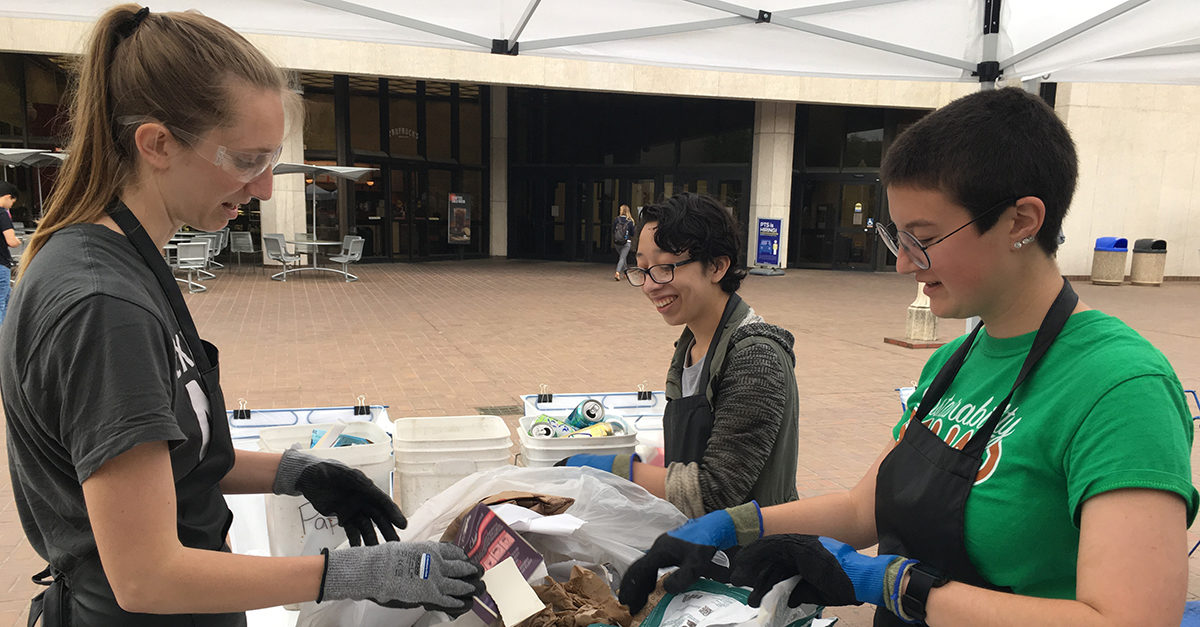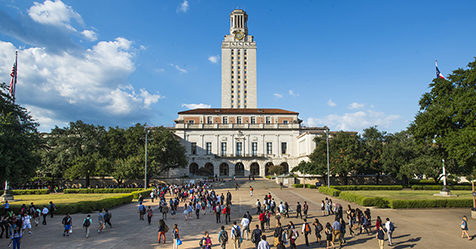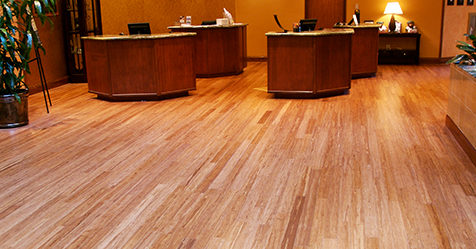Bobby Moddrell, manager of resource recovery at the University of Texas at Austin (UT Austin), defines zero waste as the practice of diverting 90% of a facility’s waste from landfills by composting, recycling, and reusing items that would normally be thrown away. Resource recovery staff’s first step on the path to zero waste was figuring out how much garbage the campus generated.
“In 2014 we knew of about 4,000 tons of waste coming off the university,” Moddrell said. “Two years later, it was 9,500 tons. We weren’t generating more waste in 2016; we just got better at identifying where it was coming from.”
Digging Out the Findings
The university tracked the waste from every department and facility and found slightly more than half (56%) was coming from educational, administrative, and general use buildings. The rest came from student housing, dining, athletics, laboratories, and other auxiliary departments.
Now that staff had identified the university’s primary sources of waste generation, it was time to get their hands dirty with the next step—analyzing the garbage. “Honestly, digging in waste is not a lot of fun, but it’s something that is absolutely required. You can’t do a program like this without knowing what your waste is,” Moddrell said.
Staff found 45 percent of the waste was compostable, which set a plan in motion to increase composting across the campus, starting in the restrooms. With the exception of feminine hygiene waste receptacles, all the garbage bins with landfill-bound waste were removed from the restrooms and replaced with bins labeled for composting. Now campus solid waste crews take the paper towels and toilet tissue from the bins to a composting facility where it is turned into soil.
Beyond Restroom Waste
Staff have not done away with landfill bins outside of the restrooms, but they have reduced the number of them. “With too many waste containers throughout the campus, custodians were emptying bins at night that were only one-tenth full,” Moddrell explained. “We were putting too many plastic liners into the landfill.”
To encourage recycling, resource recovery staff paired the remaining landfill bins with recycling bins. “If a building had 100 landfill containers and 30 recycling contains, when we left, they had 40 pairs of recycling and landfill bins, right next to each other,” Moddrell said. “We put these pairs in pathways and near exits, making them more visible.”
Crews also placed composting bins in campus break areas and dining areas for food waste and packaging. Trained volunteers go through the bins to remove noncompostable items contaminating the bins. “Coffee cups make up the largest contamination in our composting and recycling bins,” Moddrell said. “We have multiple food vendors on campus and most of their cups look they they’re recyclable, but they’re actually not.”
Managing Mealtimes
University-run dining rooms and cafeterias provide compostable paper plates and metal utensils that can be recycled after numerous uses, said Neil Kaufman, sustainability coordinator with university housing and dining. Students use a token to purchase a washable clamshell container for takeout, which is returned to them when they bring the clamshell back.
Dining staff use a software food tracking program to help them avoid overordering food that would get thrown out. They are creative with leftovers, turning yesterday’s grilled chicken breasts into today’s casserole or soup.
“We approach our zero waste strategies through a holistic approach, looking at every part of the process to eliminate waste,” Kaufman said. “We donate edible but unused, unserved food to a local soup kitchen, and we are by far their largest source of food.
All Waste Is Not Created Equal
Keeping in mind that not all waste is ripped up packaging and left-over food, UT Austin is conscientious in how it deals with surplus items, such as calculators, computers, lab equipment, and even vehicles—they have about 1,000 tons per year of surplus.
“All of it comes to a centralized facility, where our first step is to make it available to university staff,” Moddrell said. Any leftover items are offered to public schools, then charities and assistance organizations. Next, the university sells whatever is not taken through online auctions or resale shops. The final step is to recycle any remaining items or parts. “Every item the university owns must go through this process,” Moddrell said. “Even if the item is broken, we evaluate it to see if it can be dismantled and cannibalized.”
Long-Term Success
The university’s greatest challenge in reaching zero waste is effective communication. Moddrell explained faculty, staff, and students want the program to succeed, but often don’t understand how to correctly compost or recycle waste without contaminating the bins. The university hires students to work in the resource recovery branch for at least two semesters to meet with building occupants and spread the word about zero waste best practices, such as making sure recyclable/compostable cups are empty of liquid before throwing them away to prevent contaminating the entire bin.
“We’re fortunate that that we’ve received a lot of cooperation and interest in our zero-waste program,” Moddrell said. “People are really engaged and want this to work.”




